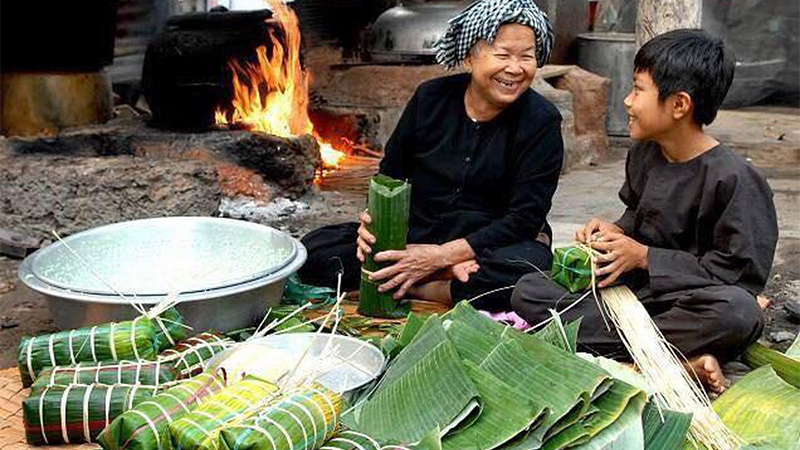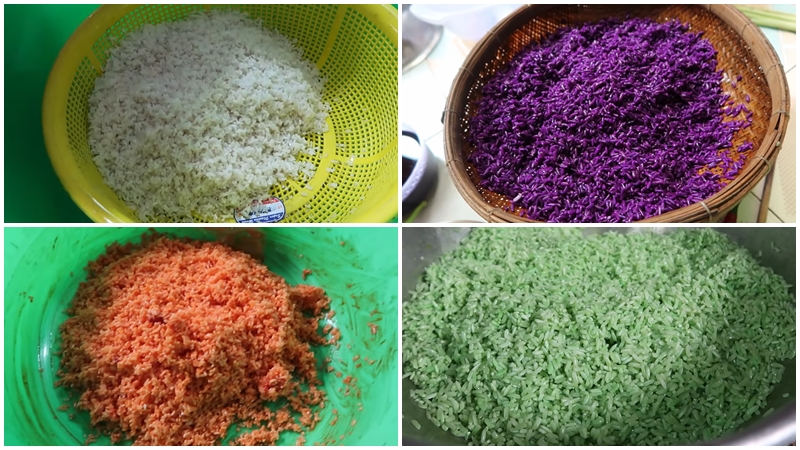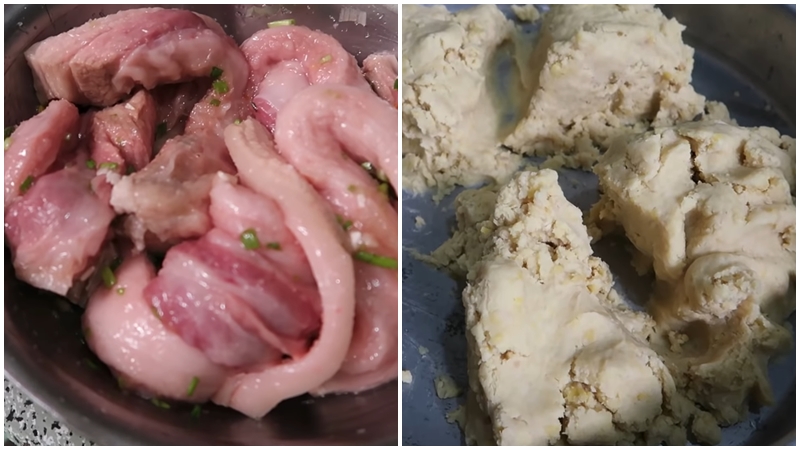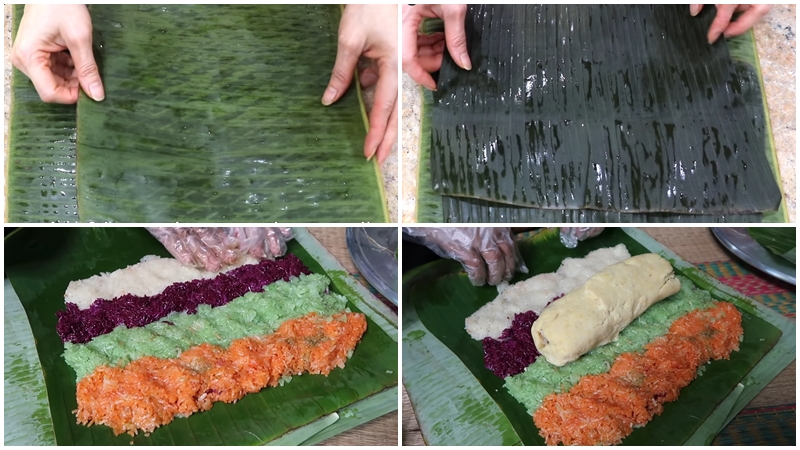For those who grew up in the Southern region, the traditional cake is a must-have delicacy for every family during special occasions. One such cake is the three-color and five-color sticky rice cake, which has gained immense popularity in recent years.
In this article, we will explore the origin and significance of these colorful treats, as well as provide a simple recipe for you to create your own at home. Get ready to impress your family and friends with this unique and delicious twist on a classic dessert!
1 Unraveling the Name and History
The term “bánh tét” is believed to have originated from the word “bánh tết,” which has undergone a regional variation in pronunciation. According to folklore, the act of “tét” or squeezing the cake into small rolls may have also contributed to its unique name.

The five-color sticky rice cake is a derivative of the traditional sticky rice cake, symbolizing the five elements: Metal, Wood, Water, Fire, and Earth. Each color represents a distinct characteristic, adding a layer of symbolism to this already vibrant dish.
2 Symbolic Meanings of the Three-Color and Five-Color Sticky Rice Cakes
In Southern Vietnam, it is customary for families to stay up together on New Year’s Eve, gathering around the warm and fragrant pot of sticky rice cake. It is a sacred moment shared by all as they step into the new year.

The three-color and five-color sticky rice cakes are wrapped in multiple layers of banana leaves, resembling a mother’s loving embrace. The vibrant colors of the cake’s filling come together to create a beautiful image of family reunion and warmth during the spring festival.
Furthermore, these colorful treats are believed to bring prosperity, good fortune, and luck to the family in the upcoming year, making them even more special.
3 Wrapping the Sticky Rice Cakes: A Step-by-Step Guide
Both the three-color and five-color sticky rice cakes hold significant meaning during the Lunar New Year celebrations. In this section, we will focus on creating the five-color variation, a symbol of success and abundance.
Ingredients
- 3kg glutinous rice
- 1 bundle of purple leaves
- 1 bundle of pandan leaves
- 1 ripe gấc fruit
- 1kg pork belly
- 1kg pork loin
- 100g purple onion
- Seasonings: salt, sugar, fish sauce, pepper, mushroom seasoning, white wine…
- Banana leaves, string (or nylon string)
Step 1: Preparing the Glutinous Rice
Begin by rinsing 3kg of glutinous rice several times until the water runs clear. Allow the rice to soak for a while as you prepare the colored water.
Wash and grind the purple and pandan leaves, squeezing out their respective juices. Prepare two separate cups of colored water. Additionally, mix 10 gấc seeds with a small amount of white wine and soak for about 2 hours before squeezing out the colored juice.

Divide the rice into four equal portions. Keep one portion white, and mix each of the remaining portions with the purple leaf extract, pandan leaf extract, and ripe gấc extract, respectively. Allow the rice to soak for 5-6 hours to absorb the colors.
Step 2: Preparing the Mung Beans and Pork
The yellow color of the mung beans represents the fifth color in the five-color sticky rice cake. To save time, use peeled mung beans and soak them for 4 hours. After soaking, add salt and cook until tender.

Mash the cooked mung beans until smooth and stir-fry them with some purple onion. Clean and cut the pork lengthwise into 1-2cm thick slices. Marinate the pork with sugar, mushroom seasoning, salt, and minced green onion for 1-2 hours.
Step 3: Wrapping the Cake
To begin the wrapping process, prepare the cake filling by flattening the mung beans with your hands and placing the marinated pork on top. Roll it tightly to ensure the mung beans completely cover the pork.

Place two clean, dry banana leaves on a flat surface, arranging them in the same direction. Add another two banana leaves in the opposite direction, with the glossy side facing up.
Scoop 2 tablespoons of each colored glutinous rice onto the banana leaves and shape them into rectangular blocks, arranging them close to each other to form a colorful square. Place the pork and mung bean filling on top and tightly wrap the cake, pressing firmly at the end.

Secure the cake with soft string or nylon string.
4 Boiling and Storing the Sticky Rice Cakes
Once your cakes are wrapped, it’s time to cook them. Place a layer of dong leaves or banana leaves at the bottom of a pot before adding the cakes. Add enough water, and typically, it takes about 8 hours to cook the cakes thoroughly.

When the sticky rice cakes are freshly cooked, hang them in a cool place to let them cool down. Avoid storing them in a closed cabinet as they can spoil quickly.
You can store these cakes for about 2-3 days in a cool place. For longer storage, consider refrigerating them, and when you’re ready to eat, simply steam or fry them again for a crispy and delicious treat.
These three-color and five-color sticky rice cakes are not just delicious but also carry deep spiritual meanings. They symbolize wealth, fortune, and prosperity during the first days of the new year, making them a creative and innovative variation of the traditional sticky rice cake. We hope you enjoyed this recipe and wish you success in creating these colorful treats with Bach Hoa Xanh’s guidance!






































